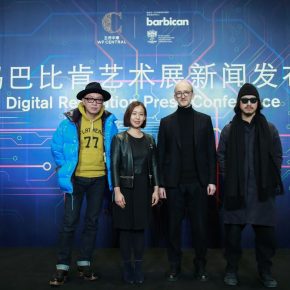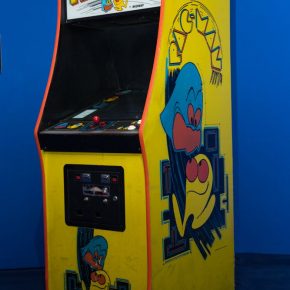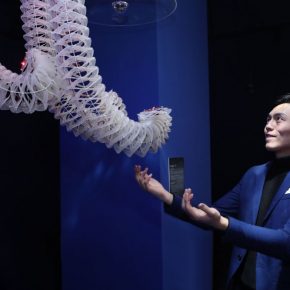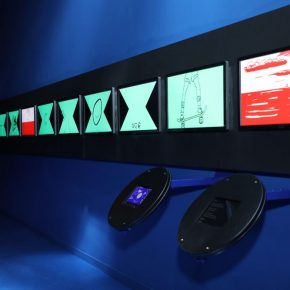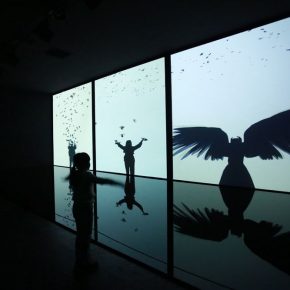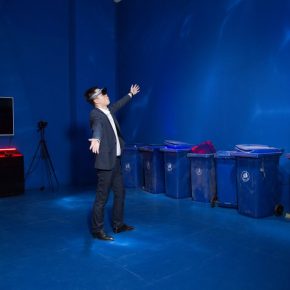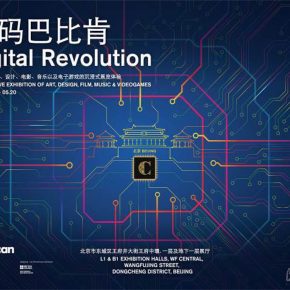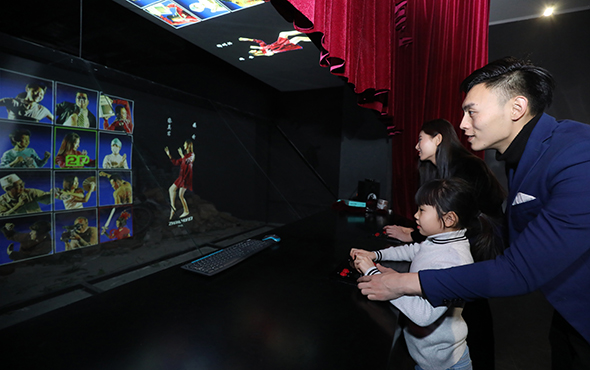
As an immersive, multi-dimensional exhibition designed to explore the interaction and transformation between the art, design, film, music & digital games, more than three hundred thousand people all over Europe have visited and experienced the show since the “Digital Revolution” Digital Barbican debuted in London in 2014. It is an interactive and creative exhibition of science and technology and audio-visual entertainment, bringing together the creations of many artists, film makers, designers, architects, musicians and digital game developers, to create a world surrounded by digital technologies, to discover the evolution history of digital technology and its impact on culture and entertainment and also reflected on the introspection of human beings connecting science and technology. On January 16, 2018, “Digital Revolution” Digital Barbican opened at WF Central in Beijing, and it is the first large-scale digital art exhibition in Asia.
The interactive and immersive digital exhibition is curated by the Department of International Affairs, Barbican Centre, divided into 7 thematic exhibition spaces, including “Digital Archeology”, “Creation of All People”, “Creative Space”, “Sound and Vision”, “Digital Future”, “Code Art”, “Independent Game Space”, and features more than 140 works of art. The development and changes in the digital era are ever-changing. The first batch of digital products has entered the field of “archeology” under the impact of the rapid development of hardware and software. It specifically researches the history of the development of video games, and it’s also a nostalgic trip for the young original inhabitants of the digital age. The show features the world’s first video game entitled “pong”, created in 1972, which has completely changed the emerging video game industry. Pac-man, born in the 1980s, was once the most profitable game in history and once became a culture symbol.
The audience’s interaction and participation are essential for this exhibition, only when the audience participates in it, can the work really start. “Together” is a work of animation creation inviting the audience to participate in it, through the minimalist lines and pallet presupposed by the network, viewers can conveniently create a brief loop animation. The suspended-type human-computer interactive installation of “Pet Zoo” uses Artificial Intelligence to give the installation a character and emotion of a pet, which interacts with the audience’s gestures and activities. The work of “Wishing Wall” is able to turn the participant’s wishes by phone into the illusion of a butterfly dancing, which is beautiful and dreamy. In the film “Gravity” of 2013, which meets the audience’s imagination of space, it mainly uses a computer to generate the images of the majority of the movie clips. The audience can experience the special effects of the film at the exhibition, personally experiencing a wonderful feeling of “returning to space”. Life is an eternal proposition for human beings. The interactive trilogy of “The Treachery of Sanctuary” uses a huge projection and water to reflect the stories of birth, death and the transformation of soul. In the scene of “death”, crows fell from the sky and swallowed the projection of a participant’s body, and in the scene of “the transformation of soul”, participants wave their hands like a bird waving its wings and fly to the sky.
The exhibition on display in China also invites Chinese new media artists Feng Mengbo and Wu Juehui to specially create works. Feng Mengbo said that “he grew up playing games”, and then learned music and art, his work entitled “Mortal Kombat" also integrated his three favorite things, the holographic video game “Mortal Kombat” is a simulation of the classic fighting arcade game, but there is a difference as the roles of the game are played by the artist’s friends, through the game programming they restore the fighting actions of characters to game actions, the game player controls the “characters in the reality” to carry out street fighting, so it is presented like black humor. Wu Juehui’s “Eye of Neo” was inspired by watching a movie entitled “The Matrix”, in which Neo finally saw the look behind the “real world”, which was a superb program, while the reality was merely a visual illusion. In Wu Juehui’s work, the audience wears the AR helmet, through the “Eye of Neo” to see a different real world. Virtual Reality is a hot topic at present, and people even question the existence of mankind, so this piece may be a thinking dimension of the topic.
“Digital Revolution” Digital Barbican is a show integrating visual art, design, film, music and video games. The combination of technology and creativity is a topic continuously focused and explored by contemporary artists, and especially in the field of new media art, the deep expression of art and the combination and transformation of technical media are always the key which does not only influence the progress of technology, but also influences the cross-border and cooperation between different aspects. As a display of work it also inspires the art museums and museums to think of the relationship between the space function and the audience. An art museum is not only a display space, or a “theater”, but also a “game hall”, and a cultural & entertainment space, where the audience can highly experience and interactively participate.
The exhibition is on display at the WF Central in Beijing, which is also determined to take this event as a starting point to build a world-class art and cultural venue. It remains on view till May 20.
Text by Zhang Wenzhi, translated by Chen Peihua and edited by Sue/CAFA ART INFO
Photo by the organizer


